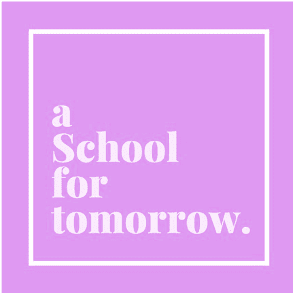Game Changers | Learn | Teaching for Character
The Whole Work of a School
The purpose of a School for tomorrow is to promote the qualities of adaptive expertise and self-efficacy required for our students to develop the character and competencies to thrive in this world and to experience progress and wellness on their pathways to excellence. All of us in a school’s community of inquiry and practice need to be committed to this. This is why character is the whole work of a school and the work of a whole school.

A MODEL FOR A WHOLE SCHOOL
Character is the whole work of a school and the work of a whole school. In most schools, educators can usually speak with confidence about what they do within their part in the life of a school. They can observe some of what happens elsewhere. Few educators currently operate with a robust understanding of the whole ecosystem in which character education operates in a school, nor do they have an adequate model that they can use to evaluate their own practice within this whole. If we think about our character practice and connect it to the context, design, and experiences of character learning across all aspects of a school through a coherent model of character education that applies to our whole learning ecosystem, we might be able to locate and assess our own work through this model.
We need a model of character education to understand the whole work of a school. We believe that it is important to understand how, what we do individually in character education, can be situated within a model of what we do collectively. The operation of character education in a school can be best understood through a model that situates broad theory within specific learning contexts, design principles and experiences, as well as the exemplary character practice that occurs in them. In this article we will examine the model and theory of how character is the whole work of a school.
THE GRADUATE OUTCOMES OF A WHOLE SCHOOL
Let’s begin with the end in mind. Any model for character education needs to describe how learning occurs within a community of inquiry and practice. In particular, it needs to show how this learning is dedicated to the attainment of a clear set of desired graduate outcomes based on 21C civic, performance, and moral character competencies. Our research with schools globally suggests that these graduate outcomes should emerge from the values of a school community and be moderated against the expectations that societies have for the graduates of the schools that serve them. Put simply, around the world, there are a set of graduate outcomes that members of school communities will typically adopt that will express the aspirations that they have for their students to develop sense of belonging, fulfil their potential do what is good and right in order to thrive in the world and learn, live, lead, and work as a:
- Know: Understand how to direct, motivate, influence and inspire the actions of others towards willingly achieving a shared goal
- Do: Create civic, performance and moral character in myself and others
- Be: Disposed towards building the duty and self-discipline required for a purpose-driven and virtuous life
- Learn: Reflect on the relationship between my integrity and my character
- Know: Understand how different approaches to learning can help me build adaptive expertise and self efficacy
- Do: Create successful research, development and implementation of new ideas
- Be: Disposed towards planning positive steps towards progress, taking action to see see them through and completing the process of transformation successfully
- Learn: Reflect on the relationship between my growth and my change readiness
- Know: Understand how to build and use tangible models for achieving desirable process and product outcomes
- Do: Create and evaluate a range of possible and considered options
- Be: Disposed towards assessing the impact of solutions on the basis of both evidence and judgment
- Learn: Reflect on the relationship between my direction and my creative and critical thinking skills
-
Know: Understand how to direct, motivate, influence and inspire the actions of others towards willingly achieving a shared goal
-
Do: Create effective communication with others about the object and subject of a common mission
-
Be: Disposed towards maintaining a focus on long team vision
-
Learn: Reflect on the relationship between my capacity to speak to complexity and my communication skills
I am a responsible local, regional and global citizen.
- Know: Understand how to discern, balance and meet the needs of others
- Do: Create pathways, systems and processes that grow others and nurture our shared environment and resources on our journey towards a preferred future
- Be: Disposed towards promoting shared goals and culture over personal ambitions
- Learn: Reflect on the relationship between my citizenship and my perspective
- Know: Understand how people live well in community with each other
- Do: Create positive interactions between individuals and groups within a community of inquiry and practice
- Be: Disposed towards achieving shared goals for success and wellness through processes that enhance collective connection and coherence
- Learn: Reflect on the relationship between my relationality and my collaboration
These graduate outcomes become the driving force for all of what is done is a school to promote character and competency. This starts with the design and delivery of a research-driven and evidence-based whole-school framework for education which is organised around the attainment of an agreed set of graduate outcomes such as these that promote student voice, agency and wellness, and that, in themselves, constitute its own definition of thriving. The school sustains its performance in achieving this educational purpose through the development of a fit for purpose learning culture. This means stepping forward into a preferred future where: vision and vocabulary are shared; value propositions are agreed by the school community; and the velocity, shape, and trajectory of change are designed and implemented to meet the needs of internal and external contexts.
The operation of character education in a school can be best understood through a model that situates broad theory within specific learning contexts, design principles and experiences, as well as the exemplary character practice that occurs in them. In this article we will examine the model and theory of how character is the whole work of a school.
THE THEORY OF CHARACTER LEARNING
We begin with the four critical theories we have developed to describe the influence of learning contexts for character learning that promotes the achievement of the school’s graduate outcomes.
In the Theory of Relationships, we see character education being nurtured by connections between individuals and groups that are most powerful when formed through a formative process of character apprenticeship. Character apprenticeship is associated with the Theory of Relationship and provides the most significant medium for all teaching and learning. It points to particular relationships in which individuals go through a process of moving from being novices to experts in character competency. They, in turn, help others develop their own mastery of character.
In the Theory of Culture, character education is reinforced by character leadership that attends to honourable traditions, rituals, artefacts and models. Character leadership is integral to the Theory of Culture. It refers to the specific character labour exercised by leaders in modelling character and developing character competency, as well as reinforcing character education through the signal matters and incidents of daily life that constitutes the cultural groove of a school. Character education efficacy results from the will and capacity of leaders to embed a shared commitment to ‘what we want, why we want it and how we do it’ in character education.
The Theory of Everywhere expresses the conviction that character education occurs all the time in multiple sites that develop character capital across the whole school. Character capital is associated with the Theory of Everywhere and refers to the quantum of character in a community and its relevant expressions in educational practice, apprenticeship, and leadership for this character.
The Theory of Pedagogy describes how character education is directed by deliberate values-rich teaching and learning that is tested and validated through a community of character practice. This is, of course, deeply grounded in the quality of learning relationships.
Many schools engage effectively with the Theory of Relationship and the Theory of Culture. All schools need to develop their practice further in these areas and also develop additional greater collective expertise in the Theory of Everywhere and the Theory of Pedagogy. This requires an initial acknowledgment that character learning is not located singularly in a specific program or place and that specific pedagogies can be identified and tested for consistency and quality of delivery of intended character outcome. This speaks to a new understanding of professionalism in the appreciation of a rigour in approach to contexts for character learning. It cannot be considered to be good enough to base an approach to teaching and learning on waiting for moments and then capitalising on them through apparently enlightened improvisation. While some good work can be done in the moment, there is much scope for intentionally refining a craft in character education that is based on what might be anticipated and tested for validity using the same sorts of evidence-based practice that has now come to be accepted in all other areas of what we do in education.
THE DESIGN OF CHARACTER LEARNING
The next logical step from this is to consider those fundamental principles that might be derived from evidence collected across schools internationally as to how individuals and groups of teachers might design character learning. There are eight principles of learning design that our research suggests should influence the way in which learning operates within the four theories:
- Plan it: Prepare and scaffold learning that is aligned with character education objectives.
- Share it: Create and teach a consistent, common language for character competency.
- Coach it: Build student and staff character competency through conversation and goal-setting.
- Measure it: Use agreed standardised and personalised metrics.
- Listen for it: Be accessible and promote student voice and reflection
- Live it: Model character competency and confidence iteratively.
- Grow it: Enhance character competency and confidence iteratively.
- Defend it: Protect the distinctive approach and community of practice.
Typically, practitioners in schools feel most comfortable designing character learning around principles five to eight. We believe that all educators need to become experts at employing all eight of these design principles. This would be best supported through development of specific professional learning programs that address these principles in communities of inquiry and practice. Individual schools may well choose to develop their own model for character education or to tailor another particular model to suit their own contexts.
A model around which shared understanding of the centrality of a set of graduate outcomes and, eventually, a community of inquiry and practice in how best to deliver these outcomes and the character and competencies on which they are based, is both desirable and possible. This model must show how character education occurs in every part of the school, is built through relationship, refined through specific pedagogies, and propelled by the culture of the school. An education for character and competency must be built according to design principles that encourage educators to plan, share, coach, measure, listen for, live, grow, and defend it.






